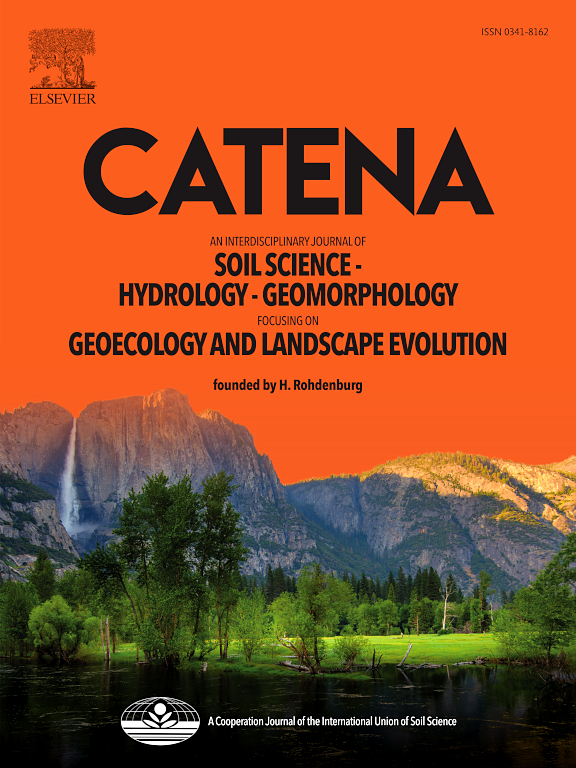Human settlements lie on paleolandslide deposits:Risk, evidence and formation of an ancient river-blocking landslide in the Jinsha River tributary, SE Tibetan Plateau
IF 5.4
1区 农林科学
Q1 GEOSCIENCES, MULTIDISCIPLINARY
引用次数: 0
Abstract
The upper reaches of the Jinsha River, known as the “Three Parallel Rivers” region, situated on the southeastern margin of the Qinghai-Tibet Plateau, are susceptible to frequent large-scale river-blocking landslides. The Dingqu River, a tributary of the Jinsha River, accommodates four paleolandslides that serve as crucial land resources for the survival and development of the local population. The county seat of Derong is situated on the largest paleolandslide deposits among them. However, this fact has not been verified or disclosed in prior engineering geological investigations, resulting in inadequate long-term management and prevention of geological hazards that pose a threat to the county seat. This study aims to clarify the mechanisms of regional geological hazards using field investigations, optically stimulated luminescence (OSL) dating, stratigraphic drilling, and river profile analysis. The key objectives are to identify crucial evidence of paleolandslide deposits, determine their ages, and explore the role of river geomorphology in their formation. The results indicate that the age of the paleolandslide is 1.41 ± 0.12 ka, with a minimum deposit thickness of 100 m and an estimated volume of 250 million m3. The headward migration of knickpoint from the Dingqu River outlet caused rapid river incision at a high rate of 5.25 ± 0.38 mm/yr, providing the geomorphic conditions for the formation of the landslide. The lack of evidence for dammed landforms, such as lake deposits, vertical-step knickpoints, and outburst flood deposits, except for landslide deposits, can be primarily attributed to the limited lifespan of landslide dams and the erosion of flood deposits caused by the high river incision rate. It is recommended to prioritize measures to prevent river incision and manage water usage above the paleolandslide deposit to ensure the safety of towns located on these paleolandslide deposits. This study enriches the database of damming rockslide in the Jinsha River tributaries and provides a detailed case for exploring the coevolution of active orogenic rivers and slopes, reflecting potential risks faced by human settlements on paleolandslide deposits.
求助全文
约1分钟内获得全文
求助全文
来源期刊

Catena
环境科学-地球科学综合
CiteScore
10.50
自引率
9.70%
发文量
816
审稿时长
54 days
期刊介绍:
Catena publishes papers describing original field and laboratory investigations and reviews on geoecology and landscape evolution with emphasis on interdisciplinary aspects of soil science, hydrology and geomorphology. It aims to disseminate new knowledge and foster better understanding of the physical environment, of evolutionary sequences that have resulted in past and current landscapes, and of the natural processes that are likely to determine the fate of our terrestrial environment.
Papers within any one of the above topics are welcome provided they are of sufficiently wide interest and relevance.
 求助内容:
求助内容: 应助结果提醒方式:
应助结果提醒方式:


